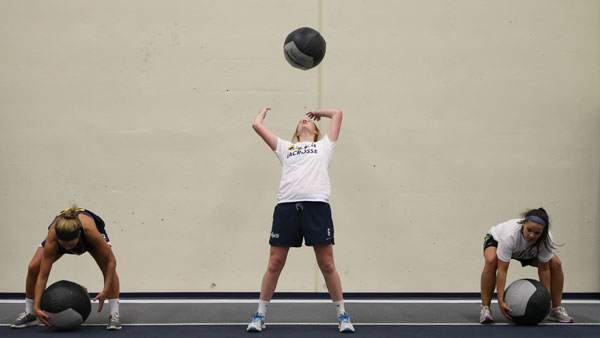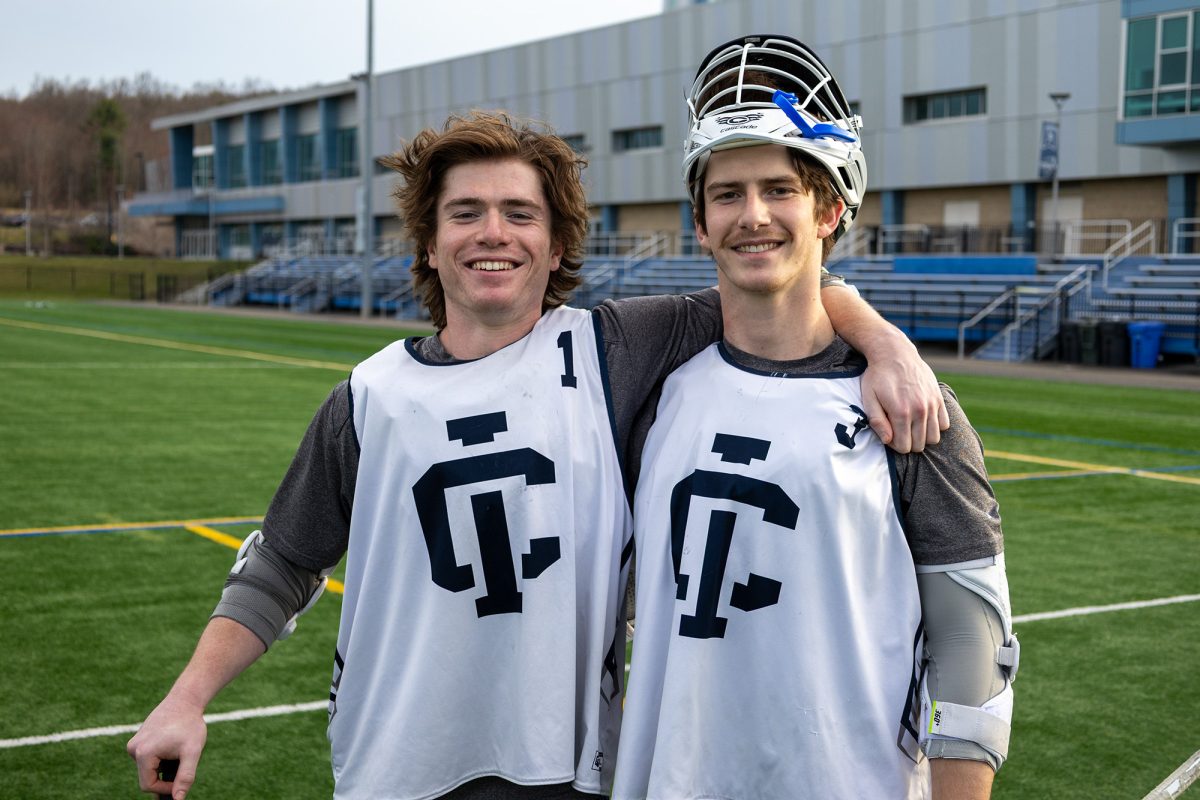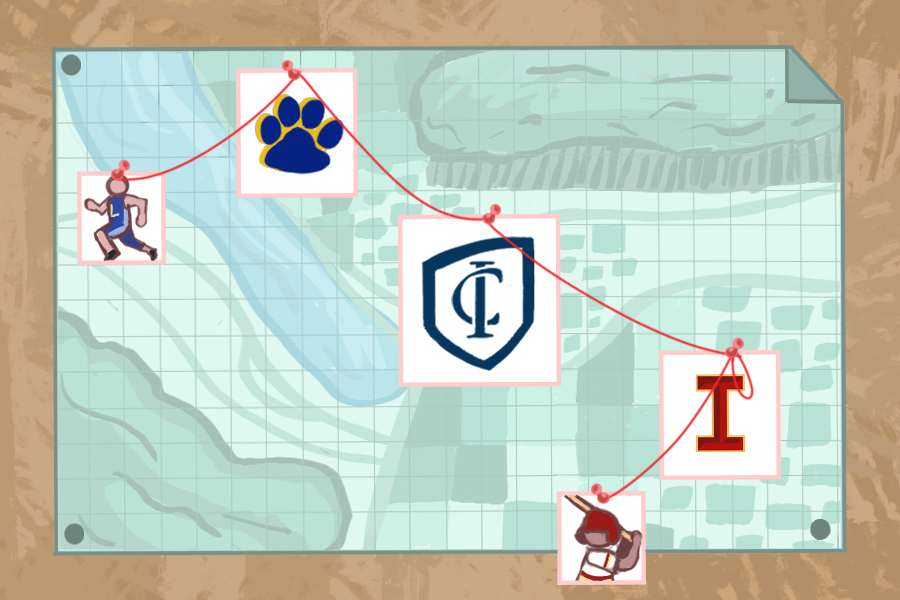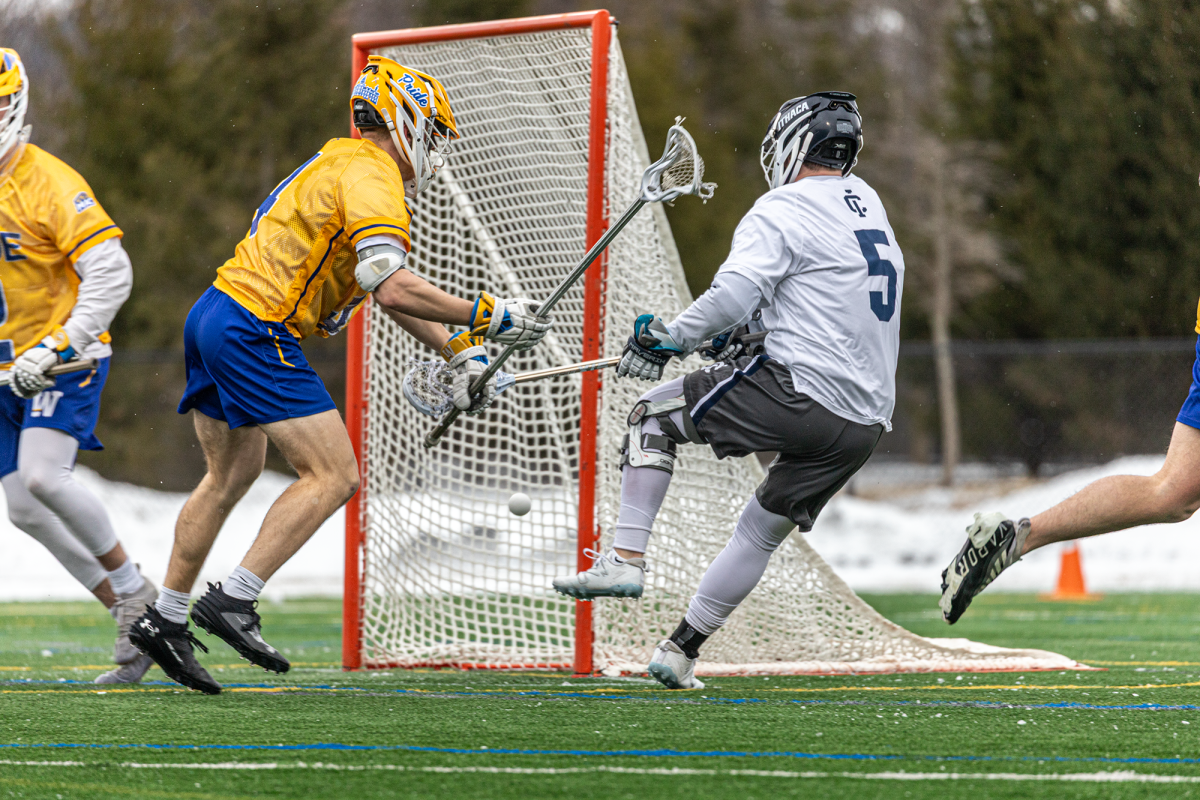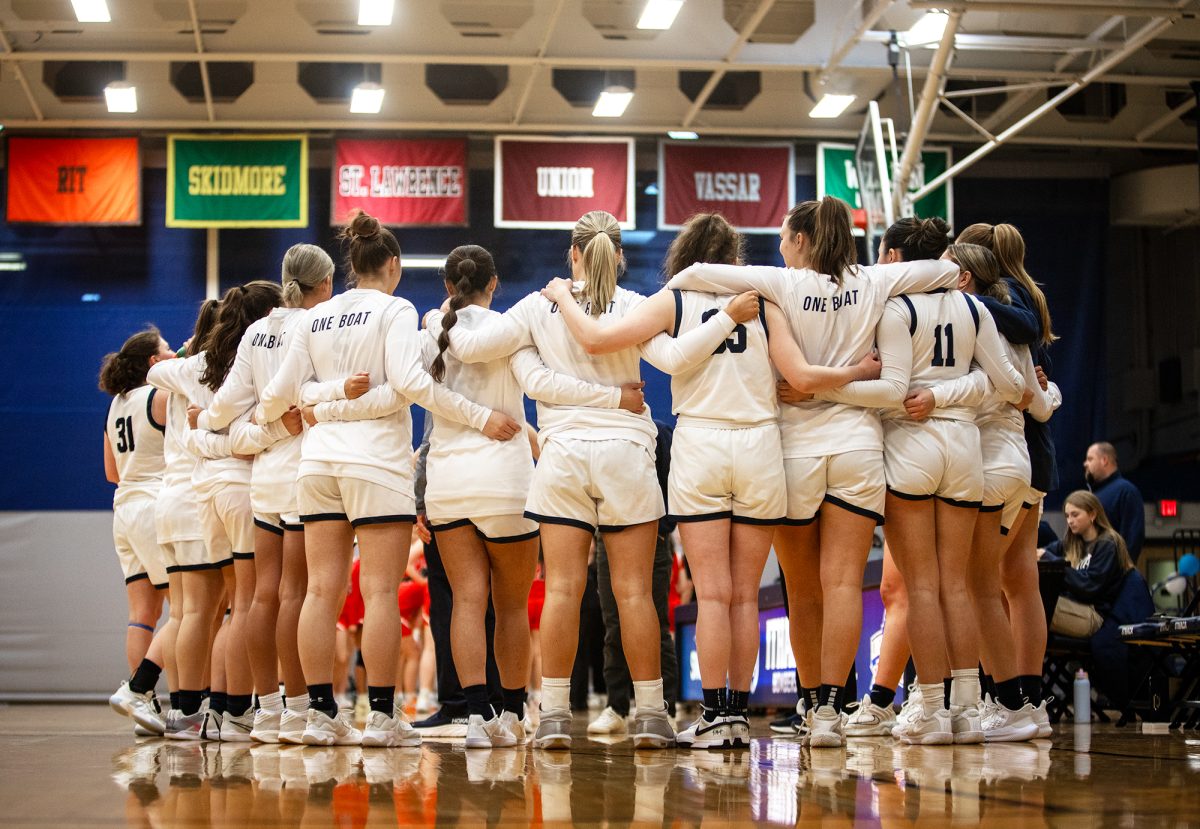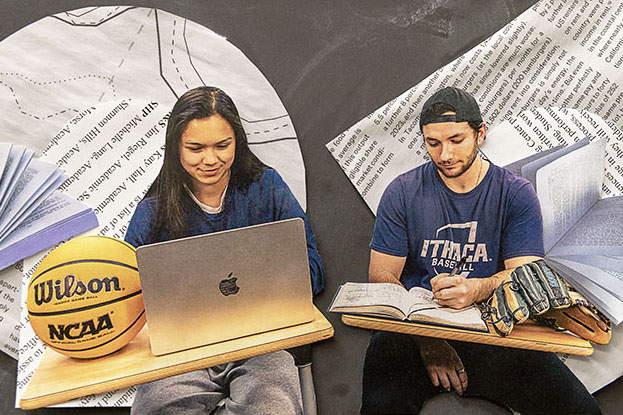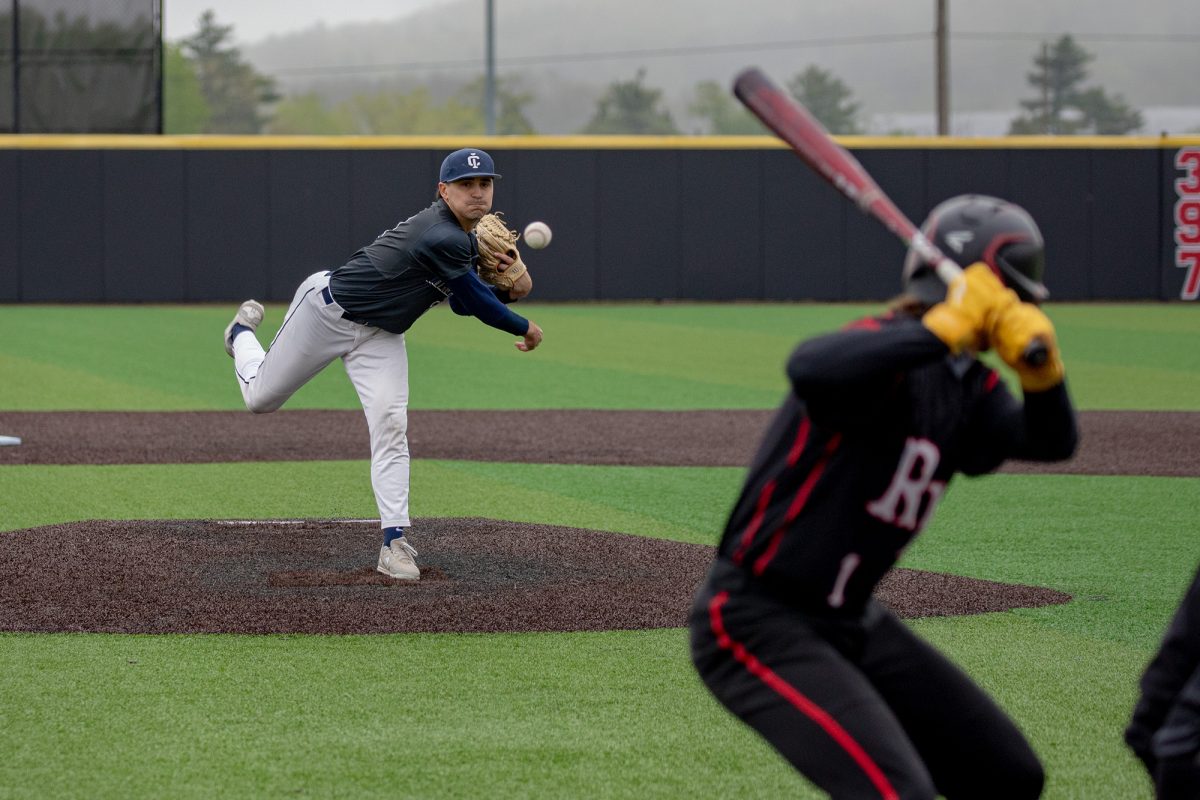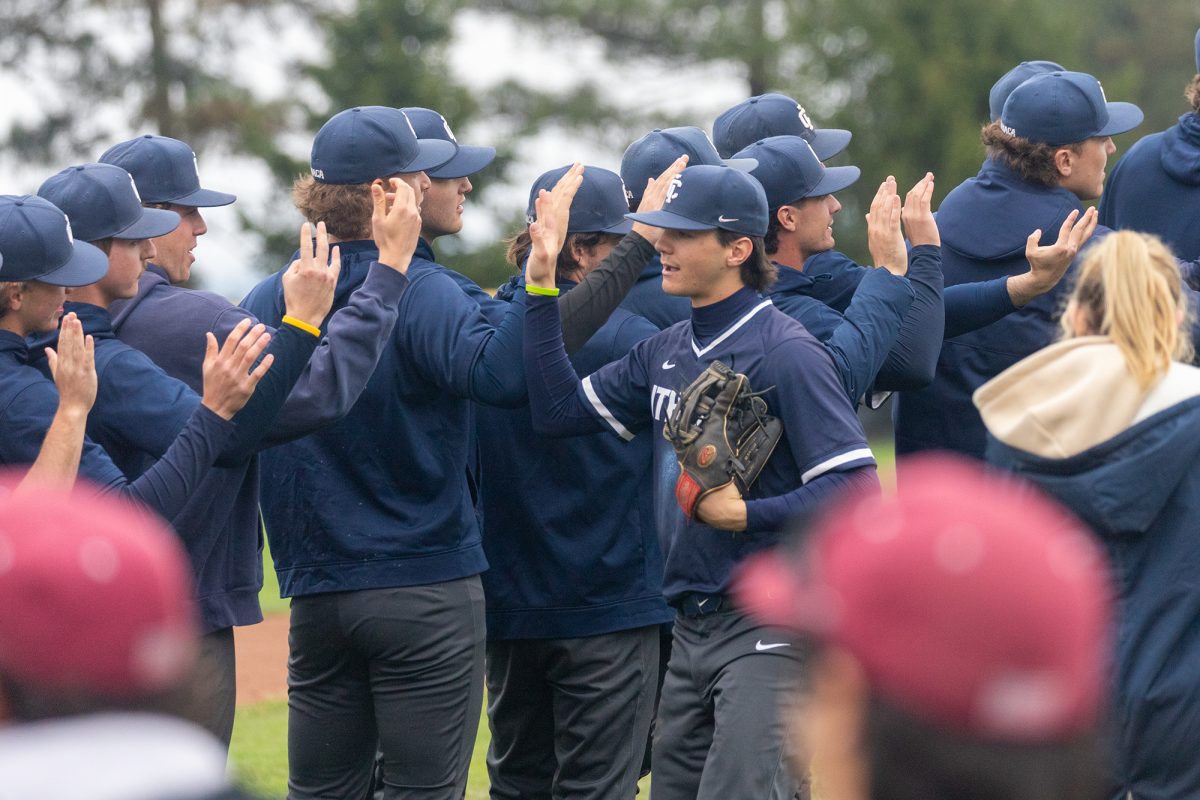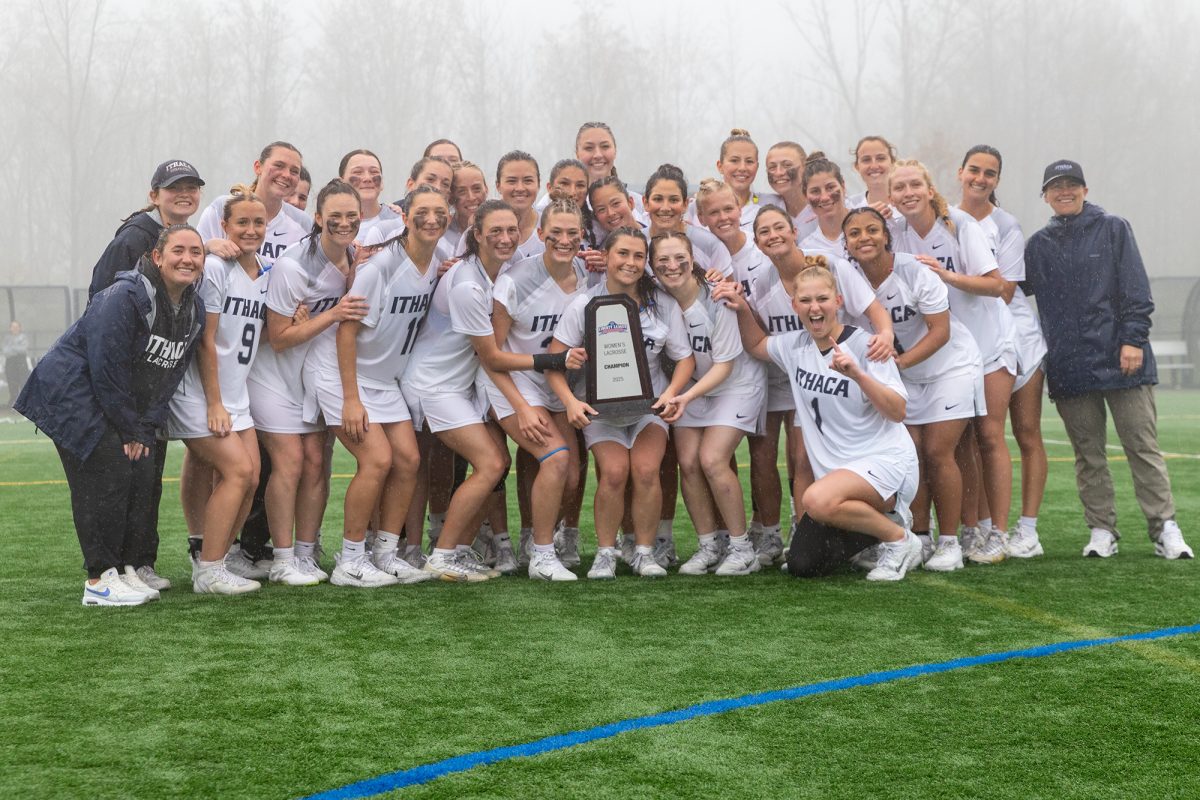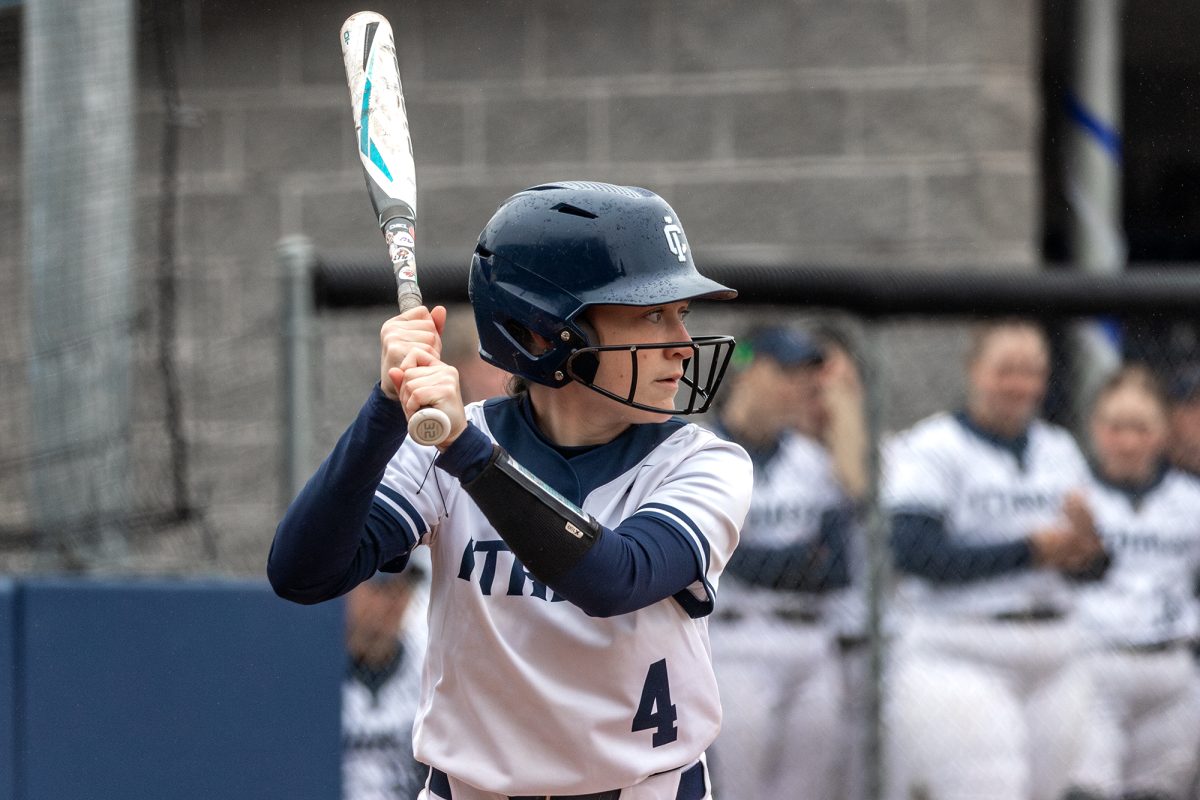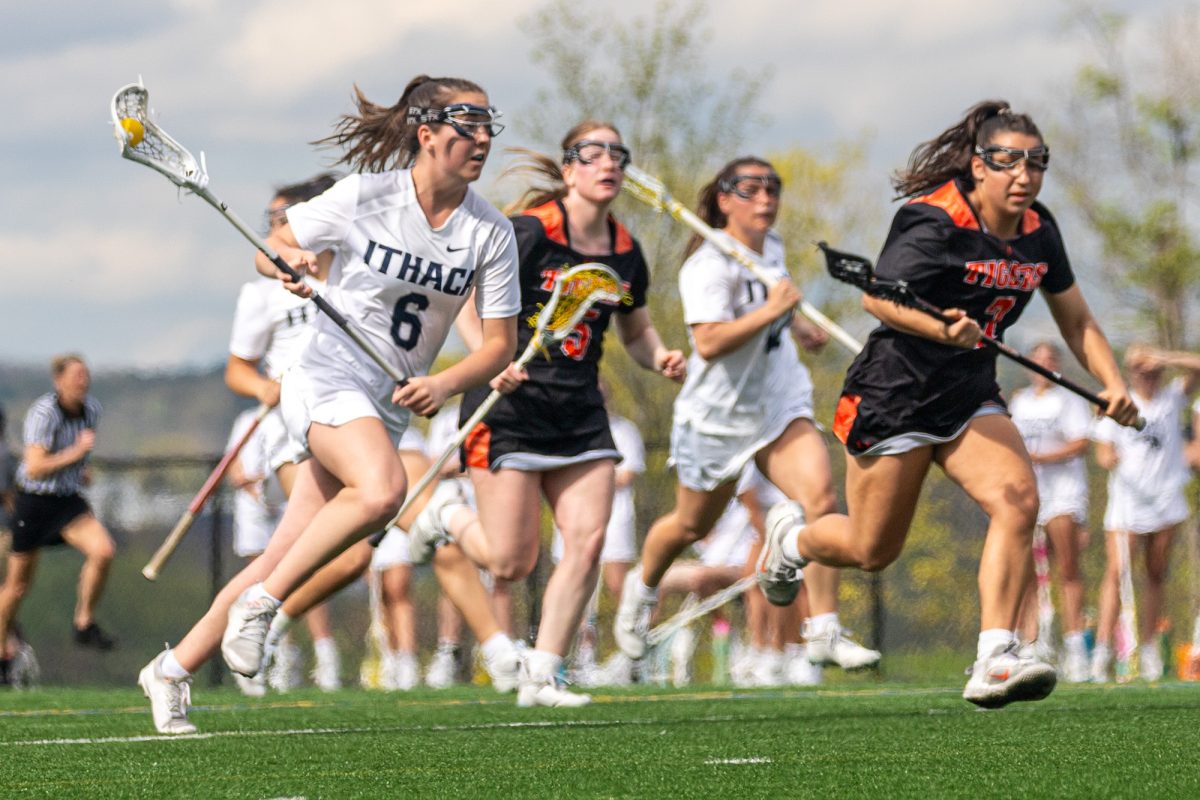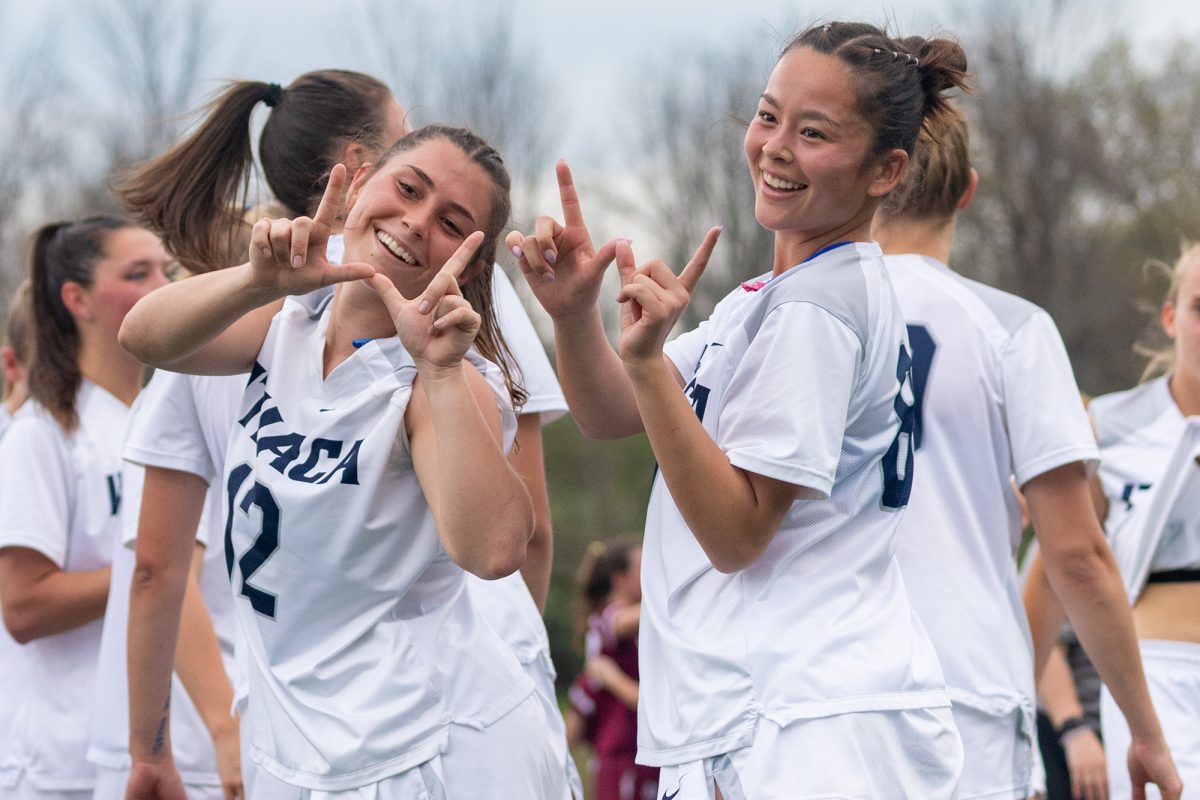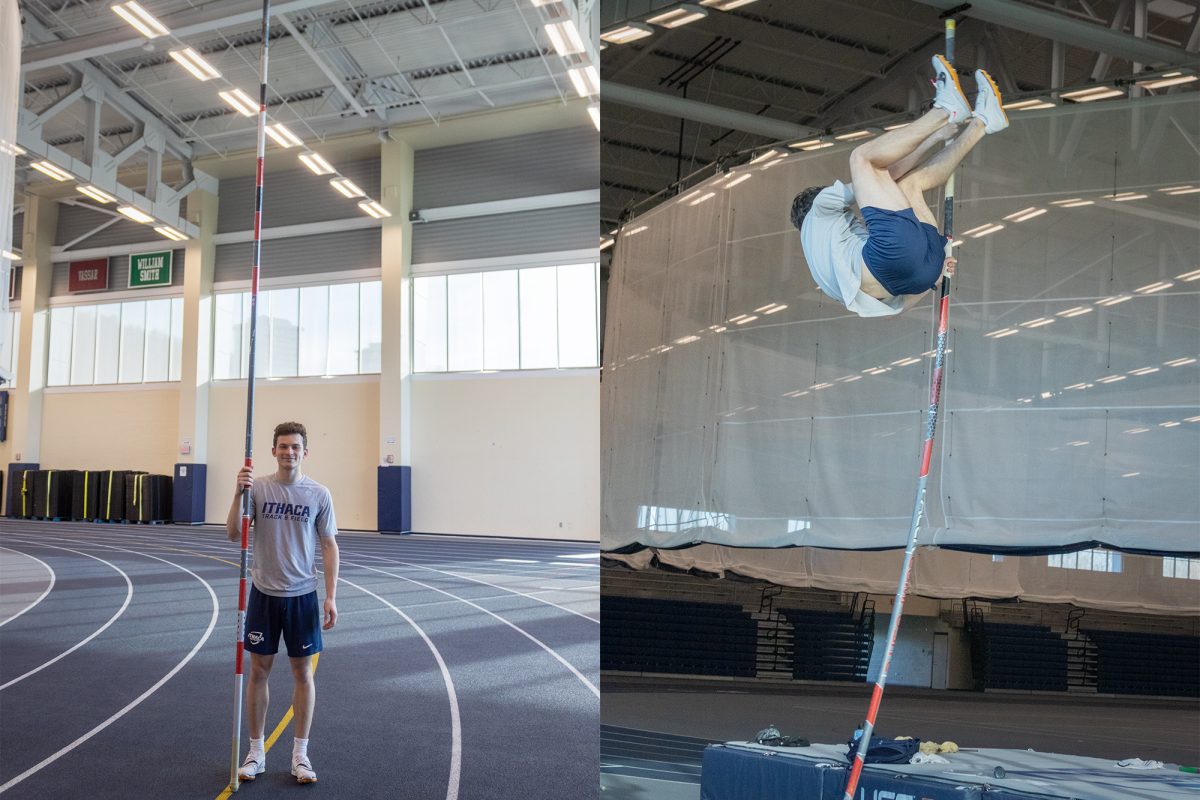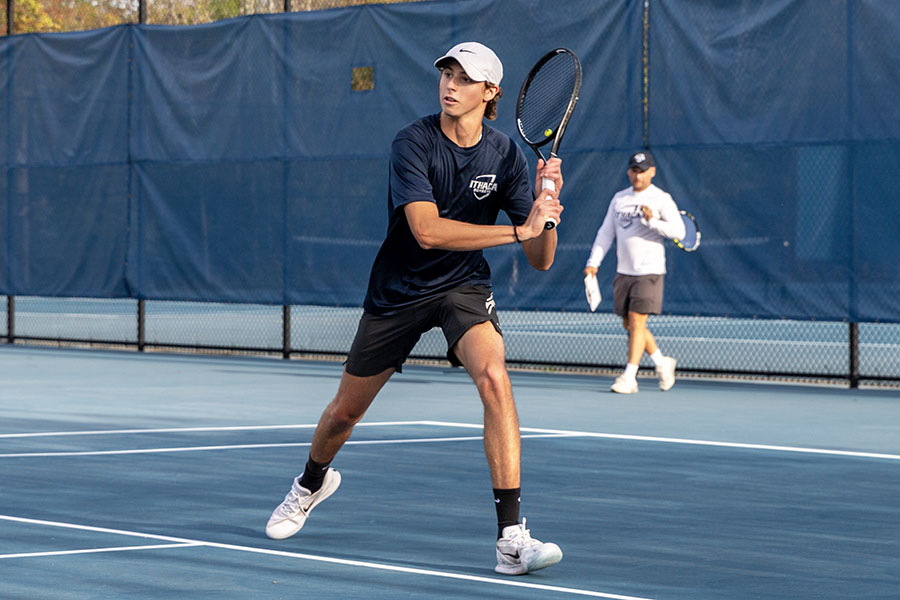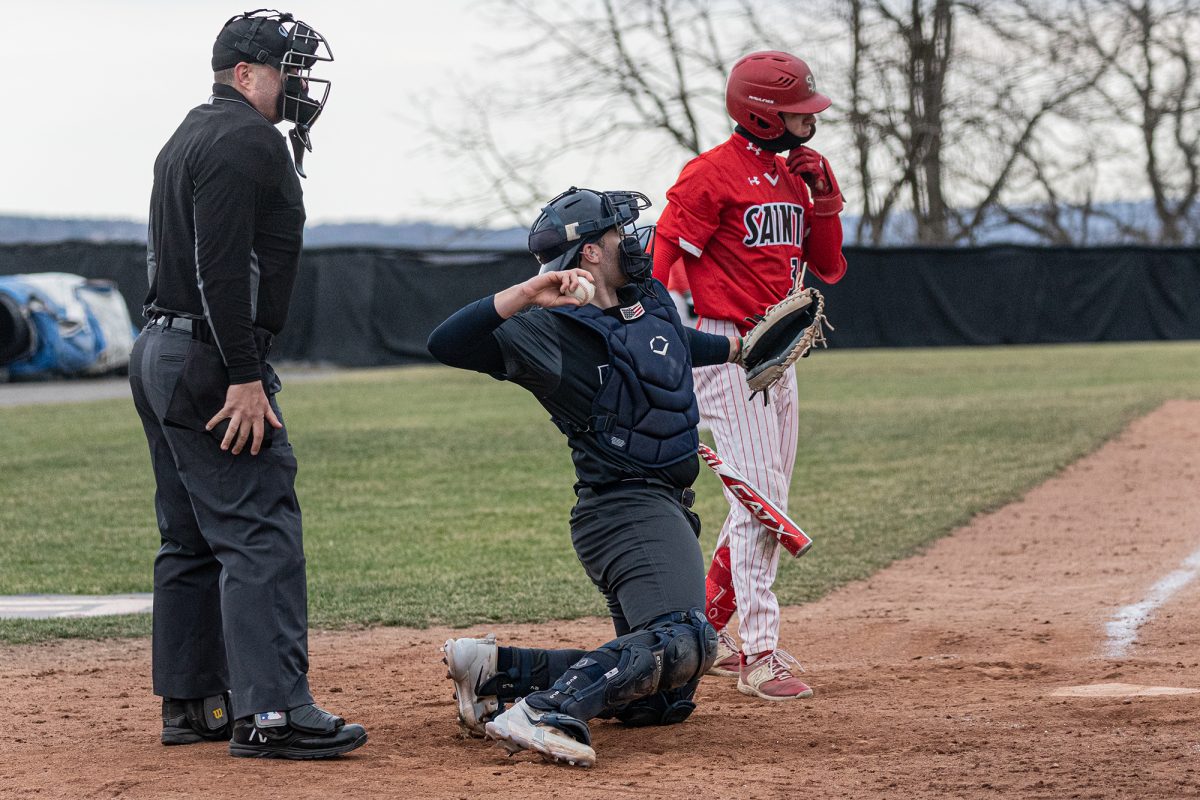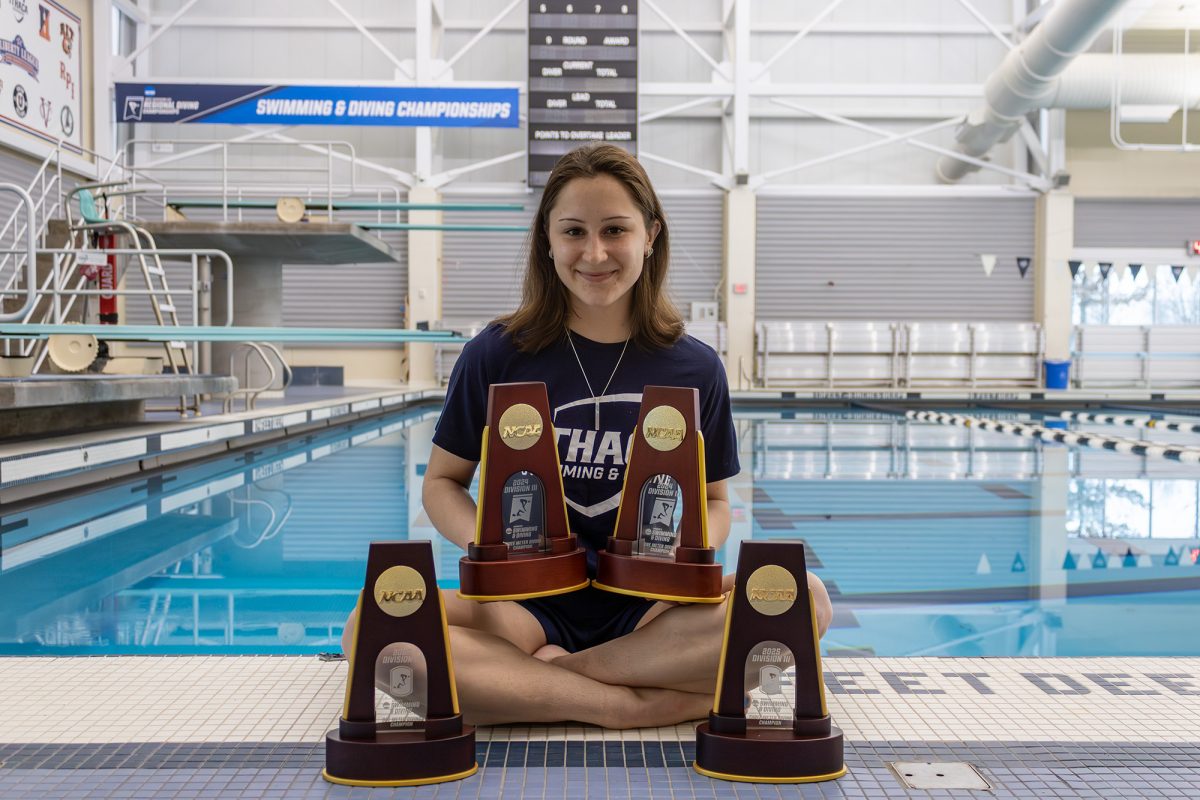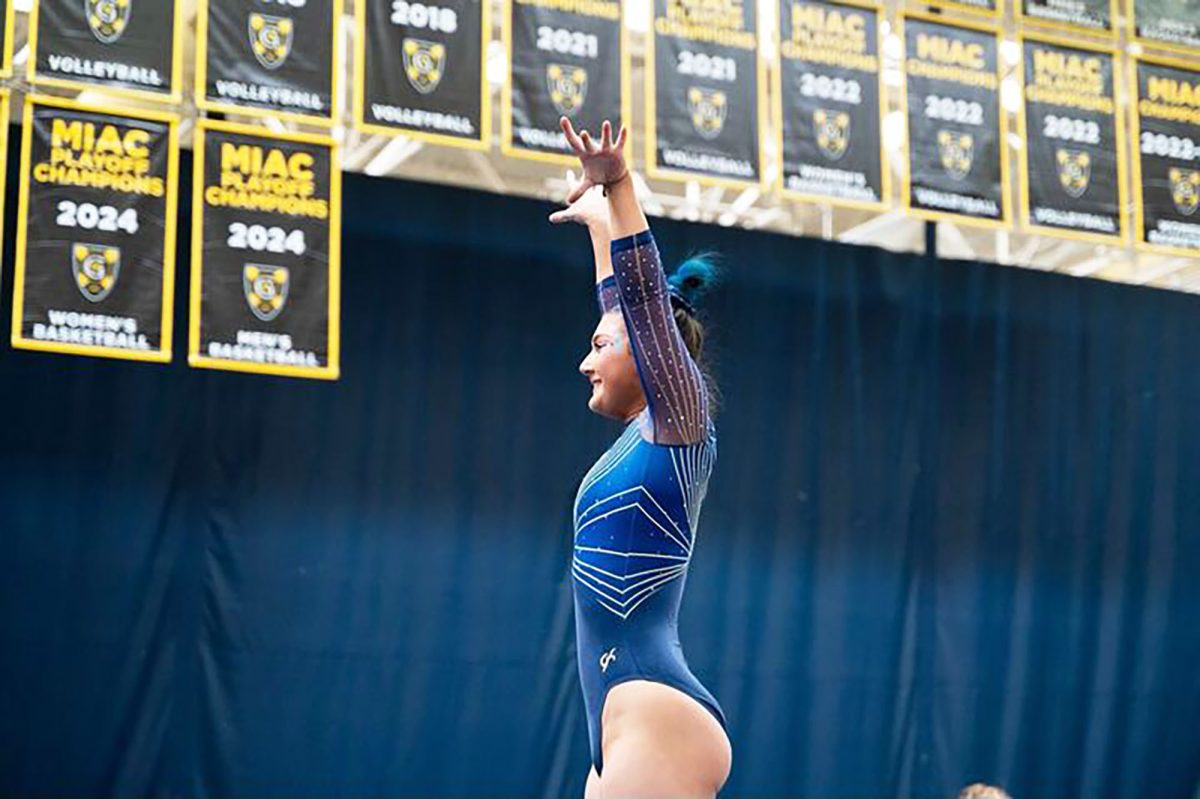Scrimmage
On Sundays at noon, while the rest of the campus is still sleeping off its Saturday night festivities, 40 baseball players donning dark blue T-shirts and gray pants step onto the grass field.
This particular Sunday is cold, so most of the players are in long sleeves. The leaves on the trees behind Freeman Field are just beginning to turn shades of red and gold. A chilly wind whips the grass on the field, and a light rain begins to fall. It feels like late October instead of mid-September.
After warmups, the large team forms into two smaller ones, and the players begin a game under the watchful eye of head coach George Valesente and his staff.
The players make the intrasquad scrimmage as close to a real game as possible. After all, Sundays are the day they look forward to most. Three other practices plus two weightlifting sessions per week all lead up to the end-of-the-week competition. Besides these scrimmages, the team won’t have an opportunity to play a real game for another seven months.
“The offseason is tough, because we are working so hard for games that we aren’t going to play until the spring,” junior catcher Cooper Belyea said. “We do a pretty good job with our intrasquad scrimmages though. We get pretty competitive with each other.”
Complete with two umpires and the center-field scoreboard that is operated from the small press box above the home dugout, the game gets into full swing with strong defensive showings from both teams. By the third inning, the score is still tied at zero.
The players banter with one another and the umpires, occasionally arguing or letting out a collective groan when a close strike is called. For a team that was so close to a national championship last year, competitiveness is in its nature.
Last year, the Bombers were one win away from the Division III national championship game for the first time since winning it all in 1988. As they scrimmage, the loss to the University of Southern Maine is still fresh in their minds.
“We went so far last year and came so close to the big game, so it seems like there’s a little bit more on the line this year, because we are expected to do well,” Belyea said.
With a runner on first in the top of the fourth inning, a batter lines a pitch off of sophomore Andrew Sanders up the middle. Belyea, who had been awaiting the pitch from behind the plate, pops out of his catcher’s squat to instruct his teammates.
“Cover third, cover third!” he yells to the third baseman, who has strayed from the bag. The baseman quickly recovers, and the runners are held at first and second.
Belyea returns to his stance behind the plate. But he isn’t there for long, as another single is ripped into right field just two pitches later to score the runner from second. Two more runners from the opposing team would cross the plate before the inning ended.
The game continues in this fashion. Substitutions are frequent, and all 40 players get a chance to play. Pitchers are rotated every inning or two.
Valesente watches the game unfold from his spot in the dugout. He moves around, occasionally joining the other coaches in the adjoining equipment shed, otherwise leaning against the fence closer to home plate. For him, the game is an evaluation, a preview of what next spring will look like.
After the nine innings, the team huddles around Valesente, who debriefs the players before they disperse. The scrimmage has been just what Belyea said it would be — competitive, and a chance for the players to prove their worth.
“The scrimmages give us the sense of competition and give us a reason to work hard,” Belyea said. “They give coach an idea of who he wants to see in the spring and how they react to game-like situations.”
Team-Bonding
Every weekday at 4 p.m., upbeat music blasts behind the wall that separates the gymnastics room from the rest of Ben Light Gymnasium.
For two and a half hours, the 21 members of the gymnastics team work on their respective events. For sophomore Abrianna D’Onofrio, this involves practicing her floor routine, flipping and cartwheeling across the blue padded floor until 6:30 p.m., when the team convenes and conditions for half an hour.
At 7 p.m., the gymnasts finish their workout and pull T-shirts and spandex over their leotards.
By 7:15 p.m., an influx of 18 sweaty gymnasts fresh from their offseason training make the uphill trek to Terrace Dining Hall. Members of the team who have meal plans eat together each weekday after practice. At the beginning of the offseason, the upperclassmen had to encourage the freshmen to come with them to dinner, but after a month of team workouts, it is now part of their routine.
The team squeezes three tables together in a cramped corner of the dining hall. After they get their food, the gymnasts sit together and talk. Their conversation varies, initially talking about practice, but straying to updates on their social lives.
A month ago, these conversations were often punctuated with silence when the teammates were unfamiliar with one another. But bonding over dinner during the offseason has helped them grow more comfortable.
For D’Onofrio and the rest of the upperclassmen on the team, integrating the younger gymnasts is the most important part of team bonding. As the gymnasts eat, they make sure to include the freshmen in the conversation.
“We try to make the new players feel comfortable and like they can be friends with us,” D’Onofrio said. “The shy ones have really started opening up to us.”
Weightlifting
While the gymnasts are eating, the women’s lacrosse team finishes a two-hour practice on the turf field behind the Athletics and Events Center. It’s 8 p.m., and the sun has been down for an hour, allowing the frigid Monday night air to roll in. Because the players are only allowed to play lacrosse three times a week, all of their offseason practices are challenging. The team has been completely focused on lacrosse for two hours, but the workout is not yet finished. As they head into the warmth of the center’s weight room, the players are already tired but willing to put their bodies through one last test.
It’s almost 9 p.m., and the team is finishing its final set of lifts. As senior goalkeeper Brittany Romano struggles to lift a bar loaded with weighted plates above her head, she hears a teammate call out from across the room.
“This is the last five minutes of the game! What are you going to give for your team?”
Romano sees herself in the final minutes of a big game, exhausted from playing the entire match. The bar she holds represents the final push of the game, and her ability to fully extend it is indicative of winning. She pushes up with all of her strength, and the bar shoots over her head.
Fatigued, but finally finished, Romano racks the bar and begins encouraging her other teammates who haven’t finished the set. She attempts to put them in the same state of mind that helped complete her lift. She knows that, come regular season, the last few minutes of the game will be critical.
“Our lifts simulate games,” Romano said. “It’s very representative of our team and what we are trying to accomplish.”
On the next rack over, junior midfielder Molly Fischer has one set left. Though she is already tired from practice and conditioning, Fischer adds more weight to her bar for the final set. Her motivation stems from being a part of an underrated team, which graduated seven seniors from last year’s Empire 8 runner-up squad.
“A lot of people think that this is a building year for us,” she said. “But we are really going to surprise people.”
Leading the lift is graduate student Kelly LaLonde, whose goal is to help the team shock the conference. As she puts the players through their lifts, LaLonde focuses on making the workouts as valuable as possible.
“There shouldn’t be an offseason — there is no offseason in real life,” she said. “If I make training enjoyable and highly beneficial, there will be no offseason in their mind.”
The final few players finish their lift, and as the clock hand hits 9 p.m., LaLonde leads the team through cool-down stretches. Exhausted from more than three hours of work, the squad will be back in the weight room on Thursday and Saturday, and will practice again on Wednesday and Saturday. But come spring, the workouts will all pay off as the team looks to win its first Empire 8 championship since 2008.
“During the offseason, we want to improve our drive,” Fischer said. “We all have the motivation and competitiveness to succeed, but this year for us is about going beyond our limits and our confidence level.”
Sports Psychology
It’s 4 p.m. on the dot. The diving team plunges into the pool. One hour and 45 minutes of flipping, spinning, jumping and throwing themselves off the platforms each Tuesday physically exhausts their bodies, pushing them to the max. Finally they climb out of the water, dripping and chlorinated.
Towels are picked up from the benches lining the exterior of the pool, ran over arms, legs, backs and through wet hair. The six members of the diving team haul their sore legs into the locker room for a quick 10-minute shower.
This is the norm for the divers. They are used to physical training. And they should be, as they do it almost every day, no matter the time of year.
Clean, but still looking drained, the divers make their way to the parking lot outside the Athletics and Events Center. Backpacks are thrown in the trunk along with towels, while all six athletes pile inside junior Matt Morrison’s beige 2009 Toyota Rav-4. The athletes head over to the Center for Health Sciences.
It’s now 5:58 p.m., and the divers file into room 315 to begin the second half of their workout, which begins promptly at 6 p.m. Awaiting the team is their next coach, who isn’t there to guide them on diving technique or give the team advice on their landings. No, Justine Vosloo, assistant professor of exercise and sport sciences, will work out the one part of the divers’ bodies that is not already pummeled from practice: their minds.
Some members of the team lie flat on the floor, eyes closed. Others sit around the U-shaped conference table in the room, faces buried in arms or sleeves of sweatshirts.
Vosloo begins reading from a script that simulates a diving meet. She takes the team step-by-step through its competition-day routines, all the while telling the divers to envision themselves in the situation she is describing.
“She has us visualize everything,” Morrison said. “Not just our dives, but also standing, waiting, even if we are just eating Goldfish by the pool.”
Vosloo has told the divers over and over again that visualization is “your ability to see all five senses with your mind.” She focuses on detail, making sure each of the divers visualizes the scene exactly as it would be in reality.
Vosloo guides the team through an imaginary six-dive meet. The divers perform flawless dives, experience the free-falling sensation off the platform, and feel the exhilaration of the perfect landing, all with their eyes closed. The entire process takes about 45 minutes. By 7 p.m., their workout is finally complete.
This is harder than it seems. Morrison sometimes finds himself slipping into a mental state where everything he sees is in black and white. As soon as he refocuses on colors, his scene begins to speed up like a movie in fast-forward.
The divers embrace the mental aspect of their sport
because they have all experienced mental blocks that prevented them from performing at full potential. But the meetings with Vosloo help them overcome any hesitation they may experience.
“Once you can do it with your mind, it makes you more confident to do it with your body,” Morrison explains.
Cool Down
As the baseball team gathers for its final huddle and the gymnasts deposit their trays onto the dish return, the lacrosse players rack their weights and the divers awaken from their mental trances. It’s just another day in the life of a Bomber athlete.
“When we have people come to our team, we tell them it’s a full year commitment,” Romano said. “We are expected to work just as hard in the fall, because it’s really just an extension of our season.”
The work on the field, the time spent together, the sweat in the gym and the mental focus are all part of an athlete’s routine on South Hill.


